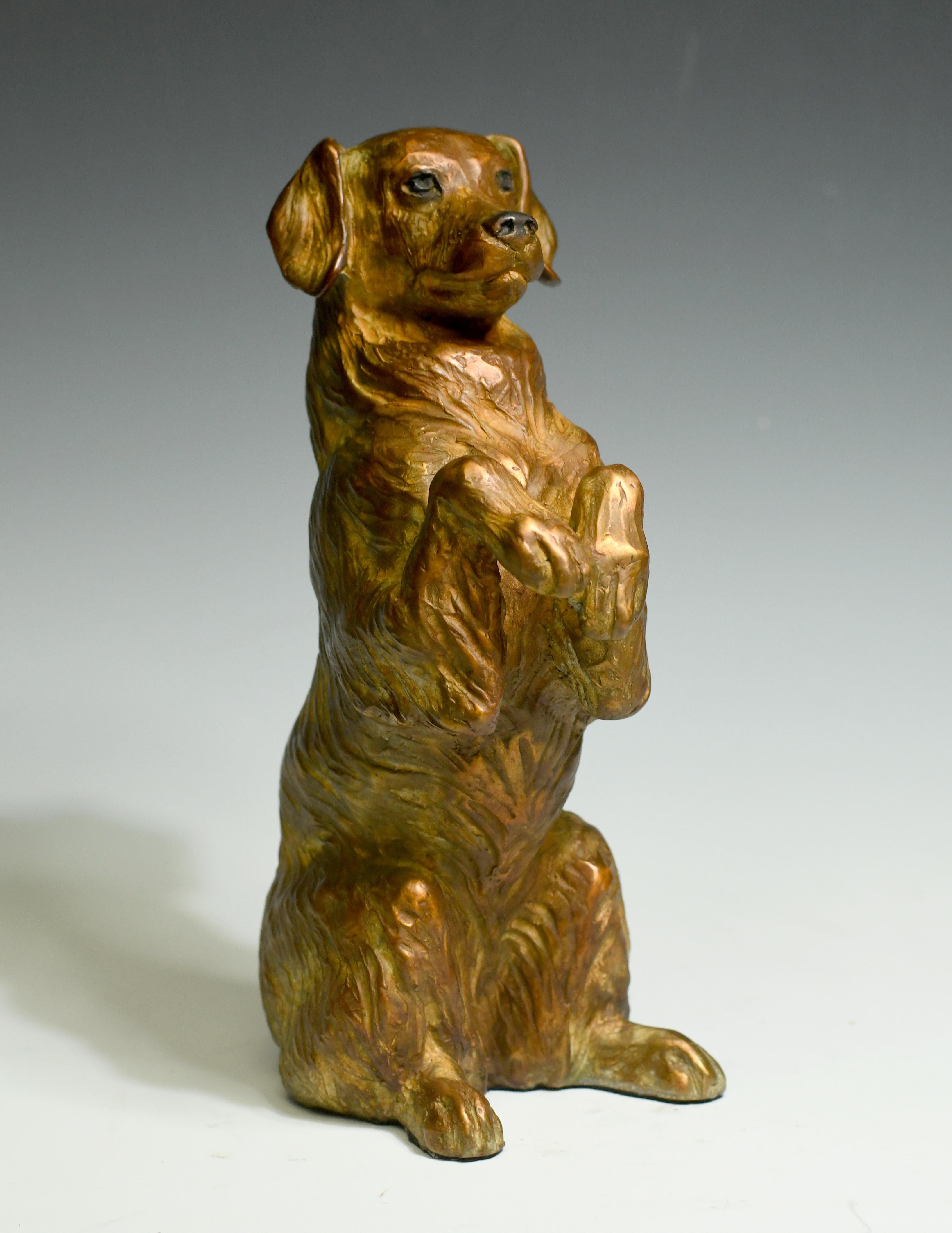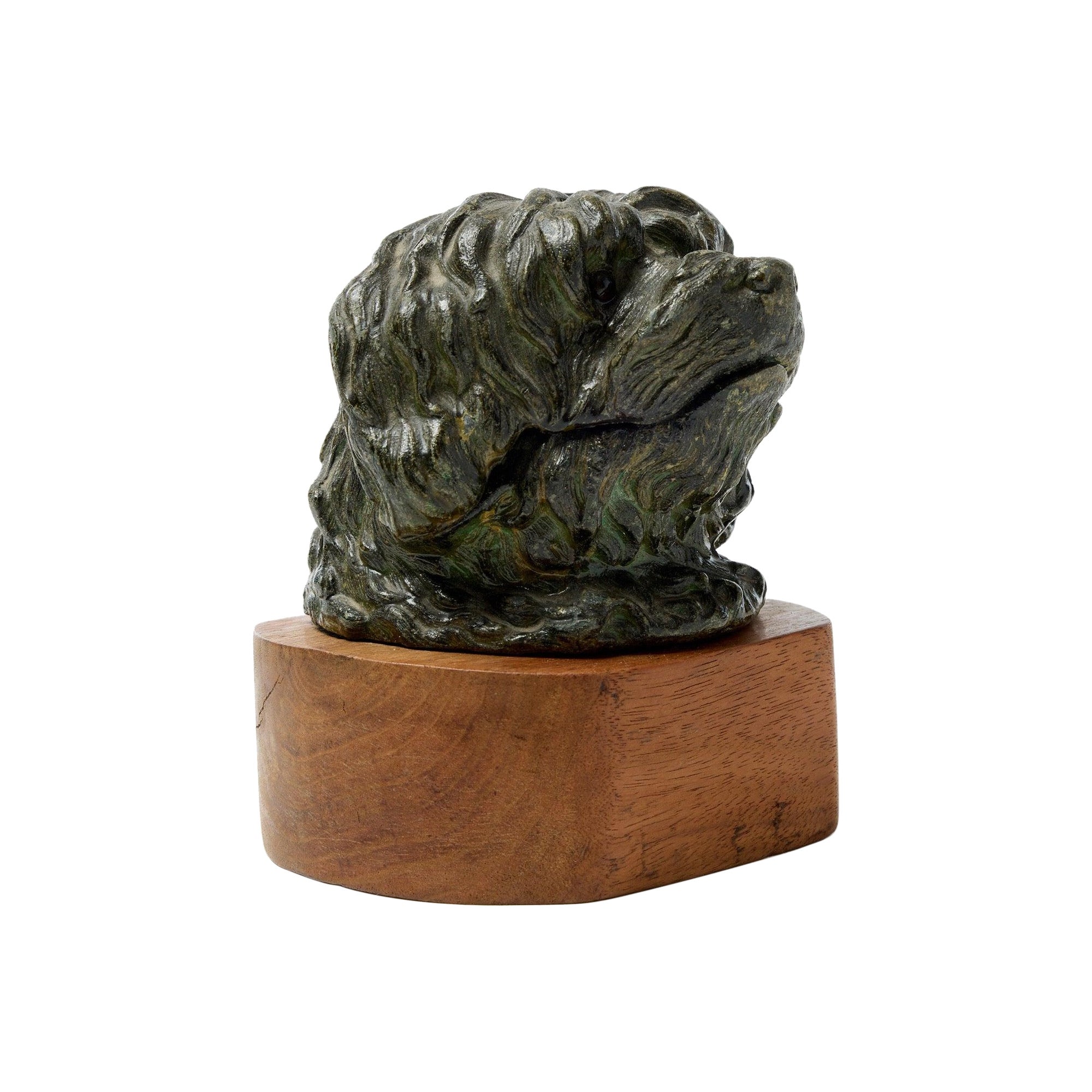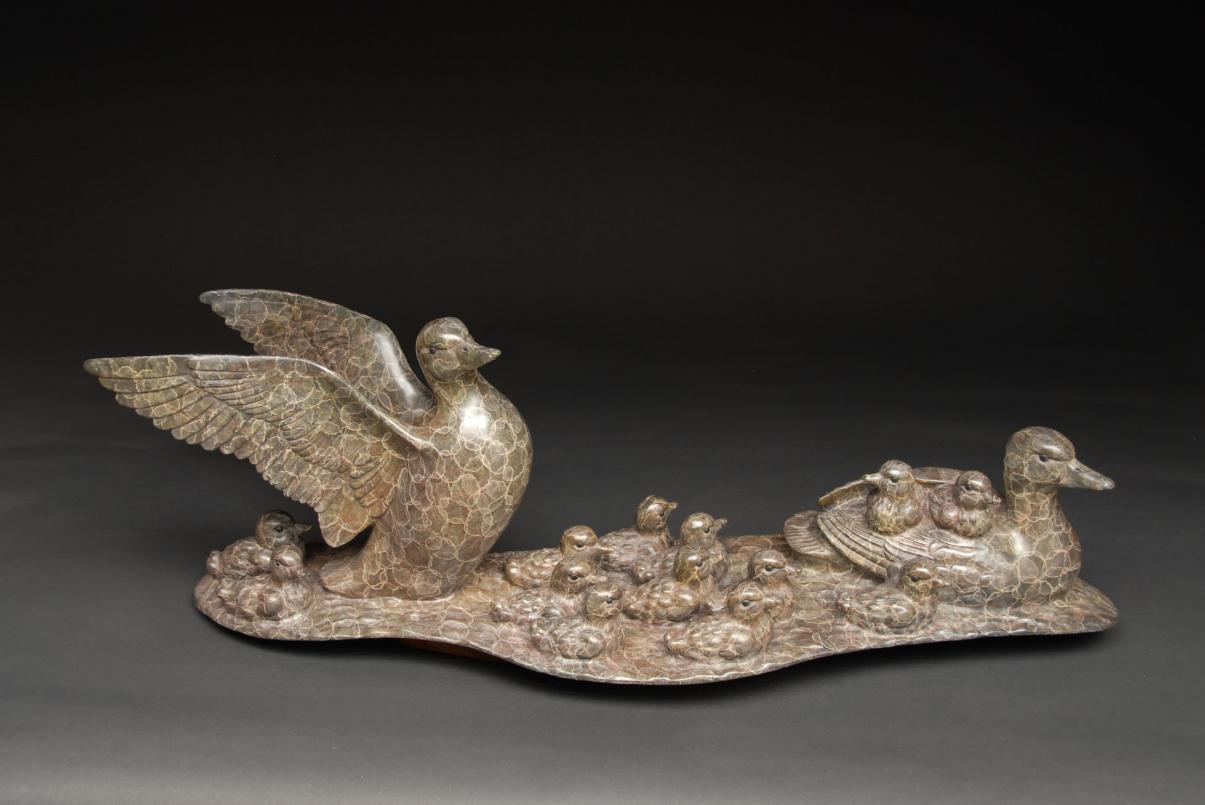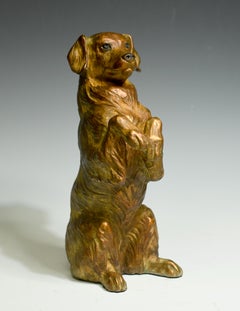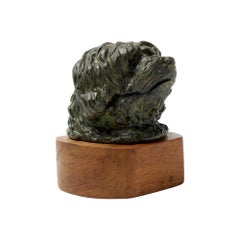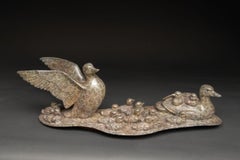Want more images or videos?
Request additional images or videos from the seller
1 of 19
Christophe FratinInkwellcirca 1845
circa 1845
$14,957.49
£11,026.48
€12,500
CA$20,695.24
A$22,455.37
CHF 11,912.16
MX$275,750.22
NOK 147,314.69
SEK 139,506.84
DKK 95,173.45
About the Item
Inkwell
"Boar Hunting"
by Christophe FRATIN (1801-1864)
Cast in bronze with nuanced brown patina
Signed on the hinge of the lid "Fratin"
A very rare old cast
France
circa 1845
height 12,5 cm
width 25 cm
depth 15 cm
A similar model is reproduced in "Le sculpteur animalier Christophe Fratin; Essai sur sa vie et sur son œuvre", J. Bougon, Le Raincy, 1983, page 35, n°36.
Biography
Christopher Fratin(1801-1864) exhibited in 1831 and regularly at the Salon. During these fairs, he met Antoine-Louis Barye whom showed with success successively "Tiger devouring a Gharial" in 1831, and his monumental "Lion and Serpent" 1833, leaving thus during these two years Fratin in shadow. He eventually met with success and esteem: the reviews were glowing, his works sold well.
The repeated success of the sculptor at the 1834, 1835 and 1836 Salons arose the interest of the aristocracy. So he worked at Château de Dampierre for the Duke of Luynes, where he made the Lions for the pediment of the main building and major interior works. Fratin, who excelled in making decorative items, provided four small pieces for achieving a princely table, for which Barye was the main architect. The hearing of Fratin quickly became international, he left for England between 1833 and 1834. The artist also made great romantic groups in Germany, in Potsdam at Sanssouci and Babelsberg castles where some still remained. Throughout his career, the interest of the English customers did not fail. This tireless worker even exported his work to St. Petersburg, where they decorated the park of the Emperor of Russia. Romanticism reflected in an obvious way in his subjects, where the horse held an important place.
Critics are numerous and often laudatory, they had Fratin as "formidable rival" of Barye in the representation of animals. These same critics pointed to his eagerness to create models and its ability to provide large works. The works were exhibited at the Maison Susse running a store at Passage des Panoramas in Paris, where they were then offered in plaster. It was really in 1835 that start editions of bronzes by Fratin, essentially cast by Quesnel workshops. Christophe Fratin was thus one of the first if not the first, to get into the editing sculpture. These bronzes were produced by the technique of sand casting (which had been controlled by the founders of the time) and were made in various sizes. These early years were taking place under the sign of success. He obtained public commissions from his native city of Metz in which he offered two life-sized Dogs, the year of his marriage, June 25, 1836 with Marguerite Sophie Pioche, the daughter of his art teacher. In 1837, the show became hostile to the young Romantic generation and the participation of Fratin was reduced to its "Mares". He did not appear the following year and in 1840 his contributions at the Salons were refused, accordingly orders began to fail. The artist's career seemed to tilt and financial difficulties became paramount.
Fratin then concentrated on edited casts and developing small commercial models. This inflection in his career was reflected in the small portrait charge,"Fratin by himself", where humor sculptor appeared. The artist, hands in pockets, is dressed in his work coat and wearing a cap. His pockets swarm of small animals: monkeys, dogs, spaniels ... In the years that followed, Fratin difficulty in obtaining public commissions, such as the "Eagles", ended in 1853, when placed on the Esplanade Metz, or the command of a pediment representing "Hunting" in 1855, for the Visconti courtyard of the Louvre Palace then under construction. Finally, in 1862, he made his last order by ministerial decision "Goat and kid". He also exhibited at various exhibitions such as the exhibition of the Society of Friends of the Arts of Bordeaux, Metz World Expo under the patronage of the Empress in 1861, or the Universal Exhibition of 1862 held in London. In 1849, as a result of serious financial difficulties, Christopher Fratin organized in Paris the first public sale without reproduction rights of 450 of his models. In 1854 he organized his second sale, which consisted mainly of bronze models with reproduction rights, which meant that Fratin renounced the use of those works. Fratin preferred and sold his works in public sales rather than opening a shop as Antoine-Louis Barye and Pierre-Jules Mêne did. Christopher Fratin organized this type of sale every year until his death in 1864.
- Creator:Christophe Fratin (1801-1864, French)
- Creation Year:circa 1845
- Dimensions:Height: 4.93 in (12.5 cm)Width: 9.85 in (25 cm)Depth: 5.91 in (15 cm)
- Medium:
- Movement & Style:
- Period:
- Condition:
- Gallery Location:PARIS, FR
- Reference Number:Seller: N.779751stDibs: LU2514215607052
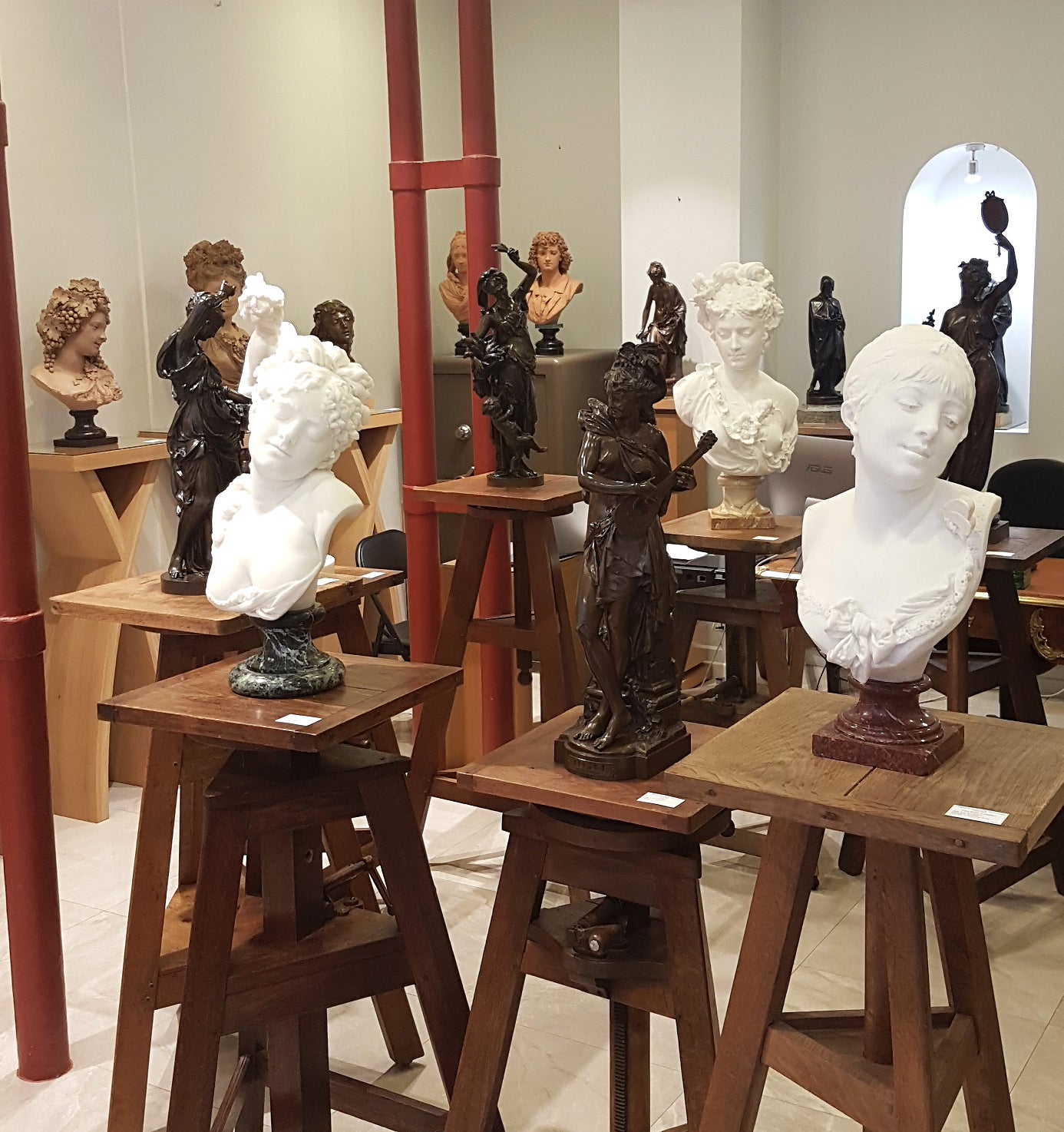
About the Seller
5.0
Recognized Seller
These prestigious sellers are industry leaders and represent the highest echelon for item quality and design.
Established in 1992
1stDibs seller since 2023
10 sales on 1stDibs
Typical response time: 9 hours
- ShippingRetrieving quote...Shipping from: PARIS, France
- Return Policy
Authenticity Guarantee
In the unlikely event there’s an issue with an item’s authenticity, contact us within 1 year for a full refund. DetailsMoney-Back Guarantee
If your item is not as described, is damaged in transit, or does not arrive, contact us within 7 days for a full refund. Details24-Hour Cancellation
You have a 24-hour grace period in which to reconsider your purchase, with no questions asked.Vetted Professional Sellers
Our world-class sellers must adhere to strict standards for service and quality, maintaining the integrity of our listings.Price-Match Guarantee
If you find that a seller listed the same item for a lower price elsewhere, we’ll match it.Trusted Global Delivery
Our best-in-class carrier network provides specialized shipping options worldwide, including custom delivery.More From This Seller
View AllSymbole
Located in PARIS, FR
Horse "Symbole"
by René PARIS (1881-1970)
Animal sculpture in bronze with a nuanced light brown patina
signed on the base "René Paris"
and dated "1942"
Cast by "A. Valsuani" (with f...
Category
1940s French School Figurative Sculptures
Materials
Bronze
$10,769
The Comedy
Located in PARIS, FR
Pierre-Marie POISSON (1876-1953)
The Comedy
Bronze sculpture with black patina
signed on the base "P. Poisson"
Cast by Valsuani (with the foundry stamp)
Raised on a stone base
Fra...
Category
1930s French School Figurative Sculptures
Materials
Bronze
Ravageot and Ravageode
By Emmanuel Fremiet
Located in PARIS, FR
Bronze with nuanced dark brown patina
Old edition cast
version with a leash at the necks of dogs
France
circa 1890
height 14,5 cm
diam. 17 cm
A similar model is reproduced in "Emma...
Category
Late 19th Century French School Figurative Sculptures
Materials
Bronze
Self-portrait
By Christophe Fratin
Located in PARIS, FR
Self-portrait
"Fratin by himself"
by Christophe FRATIN (1801-1864)
Bronze with nuanced dark brown patina
Signed on the base "Fratin"
Raised on a wooden base, with an old collector s...
Category
1840s French School Figurative Sculptures
Materials
Bronze
Paver
By Aimé-Jules Dalou
Located in PARIS, FR
This paver is a subject that is included in the famous suite commonly called "little workers" by Jules Dalou (1838-1902)
Bronze with dark brown patina
cast by Susse Frères - stamped...
Category
Late 19th Century French School Figurative Sculptures
Materials
Bronze
Monkey Match Holder
By Christophe Fratin
Located in PARIS, FR
Monkey Match Holder
by Christophe FRATIN (1801-1864)
Bronze with nuanced brown patina
Signed on the base "Fratin"
Old edition cast
France
circa 1850
height 14,5 cm
width 10 cm
dep...
Category
Mid-19th Century French School Figurative Sculptures
Materials
Bronze
You May Also Like
More Please
Located in Colorado Springs, CO
Original bronze sculpture by artist Christine Knapp. Edition 2/25.
Category
21st Century and Contemporary Contemporary Figurative Sculptures
Materials
Bronze
Sculptural Antique Inkwell from United States
Located in Sagaponack, NY
Antique cast metal sculpture of a Maltese Terrier. The hinged cover reveals a glass lift-out inkwell.
Category
20th Century American Animal Sculptures
Sculptural Antique Inkwell from United States
Located in Sagaponack, NY
Antique cast metal sculpture of a Maltese Terrier. The hinged cover reveals a glass lift-out inkwell.
Category
Early 20th Century Animal Sculptures
Materials
Metal
Cruising
By Gerald Balciar
Located in Colorado Springs, CO
Inscribed by Artist on Bronze base of the piece with signature and edition number.
2/45
Category
21st Century and Contemporary Realist Sculptures
Materials
Bronze
$11,400
French Contemporary Sculpture by Irakli Nasidze - Jurassique
Located in Paris, IDF
Glazed Ceramic
Irakli Nasidze is a Franco-Georgian artist born in 1973 who lives and works between Paris, France & Tbilisi, Georgia. At the Tbilisi Sch...
Category
2010s Figurative Sculptures
Materials
Glaze, Ceramic
Good Enough 15/49
Located in Napa, CA
Lorri Acott is an internationally collected sculptor known for her impressionistic, figurative works that explore themes of connection, resilience, and the shared human experience. H...
Category
2010s Contemporary Figurative Sculptures
Materials
Bronze
More Ways To Browse
Exhibition 1862
19th Century French Bronze Sculpture Lion
Pierre Jules Mene Bronze Sculpture
19th Century Life Size Bronze Sculpture
Antique Spaniel Dogs
Pierre Jule Mene Horse Sculptures
Pierre Jules Mene Bronze Horse
Boar Hunting
Antoine Louis Barye Lion Plaster
Boar Inkwell
Philip Mccracken
Picasso Ceramic Goat Plate
Posset Pot
R C Gorman Pottery
Ramirez Manuel
Rene Coutelle
Rennert Inner Dialogue
Resin Gummy Bear
